BRYCE CANYON NATIONAL PARK (Day 19 - part 6)
I first took a small side path to Yovimpa Point, which gave a view in the completely opposite direction from Rainbow Point.


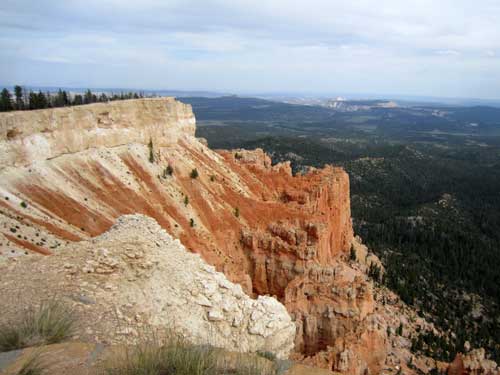
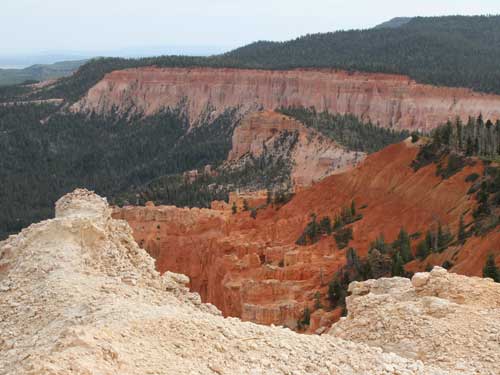


No Man's Mesa, and behind it is Mollies Nipple
Mollies Nipple is a butte at the head of Kitchen Canyon in Grand Staircase-Escalante National Monument. While from here the 7,264-foot peak looks impossible to climb, there are routes to the top. Nearby at Nipple Lake, John G. Kitchen (an early pioneer of the area) and his wife, Molly, built their ranch in 1879, which is still in operation today.
While it may conjure up giggles and snickers today , the toponym 'nipple' has been applied to many mountains, buttes, lakes and creeks around the US. Mollies Nipple was a well-known landmark to early explorers and had significant meaning to the indigenous peoples who once lived here.

I set off for a short stroll around Bristlecone Loop.


Richardson's geranium

Wild rose
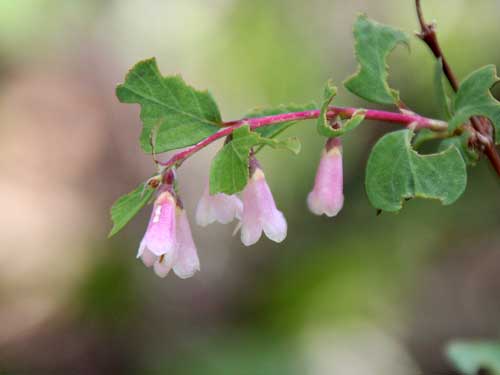
Mountain snowberry is in the honeysuckle family.

The Douglas Fir is not a true fir. 19th century botanists had problems classifying them because they had similarities to a variety of other conifers. In the past they have been pines, spruces, firs and even sequoias. But because of their distinctive cones, they finally got their own group (false hemlocks) in 1867.

White Fir needles spout singly instead of in clusters.

The needles of the Limber Pine come in groups of five. It belongs to the group of White Pines.
Is it a pine, fir or spruce? How do you tell??
Look for the number of needles that come out of the same spot on a twig. On true pines, they are in clusters of two (red pine group), three (yellow pine group) or five (white or soft pine group) needles per cluster.
Spruce and fir trees have their needles attached individually to the branches.
Spruce needles are sharply pointed, square and easy to roll between your fingers. Fir needles are softer, flat and cannot be rolled. Spruce needles are attached to small, stalk-like woody projections which remain when the needles are shed. This makes the branches feel rough. Fir branches lack these projections, and therefore have smooth bark.

A chipmunk poses for the camera.
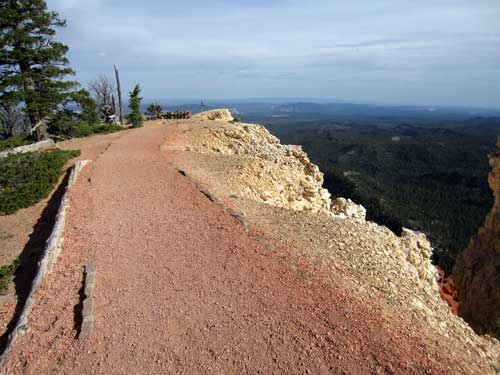


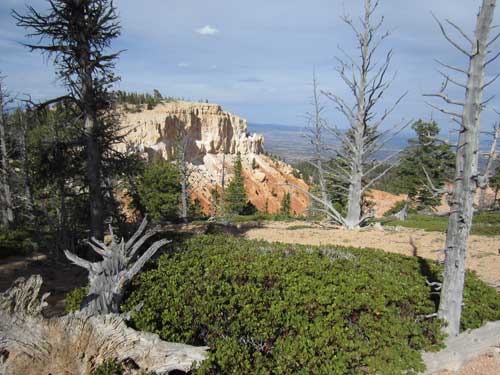


Bristlecones thrive where few other plants can grow. Located at the windiest and rockiest point on the trail, this tree is more than 1,600 years old. Even when the branches or parts of the trunk may appear dead, the tree can still be alive. In the case of this tree, the trunk died long ago, but one of the branches has taken over and become the new tree.
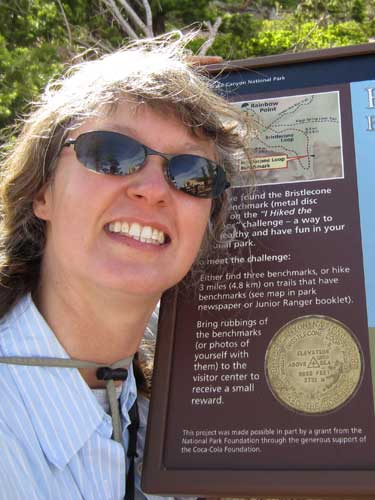
Even though I had already received my free reward, I couldn't help but collect another marker.
Once back at my car, I began the 15-mile drive back to the north part of the park, this time stopping at all the overlooks I had passed by earlier. First stop: Black Birch Canyon, elevation 8,750 feet




Ponderosa Point, elevation 8,904 feet


Ravens were among the highlights at Agua Canyon (8,800 feet).





return • continue

